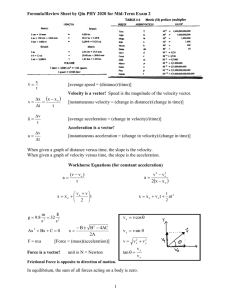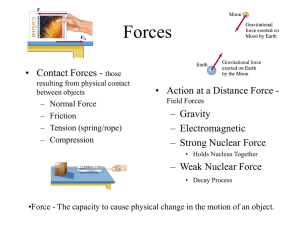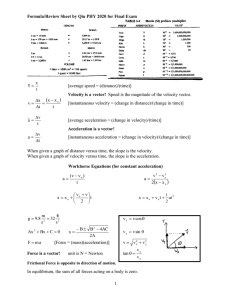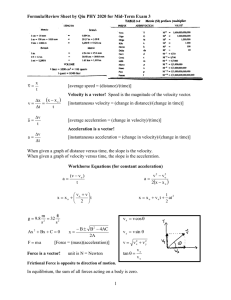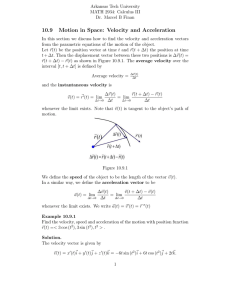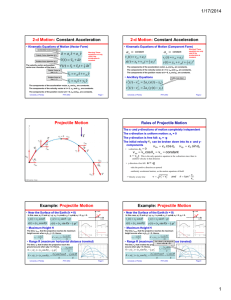advertisement
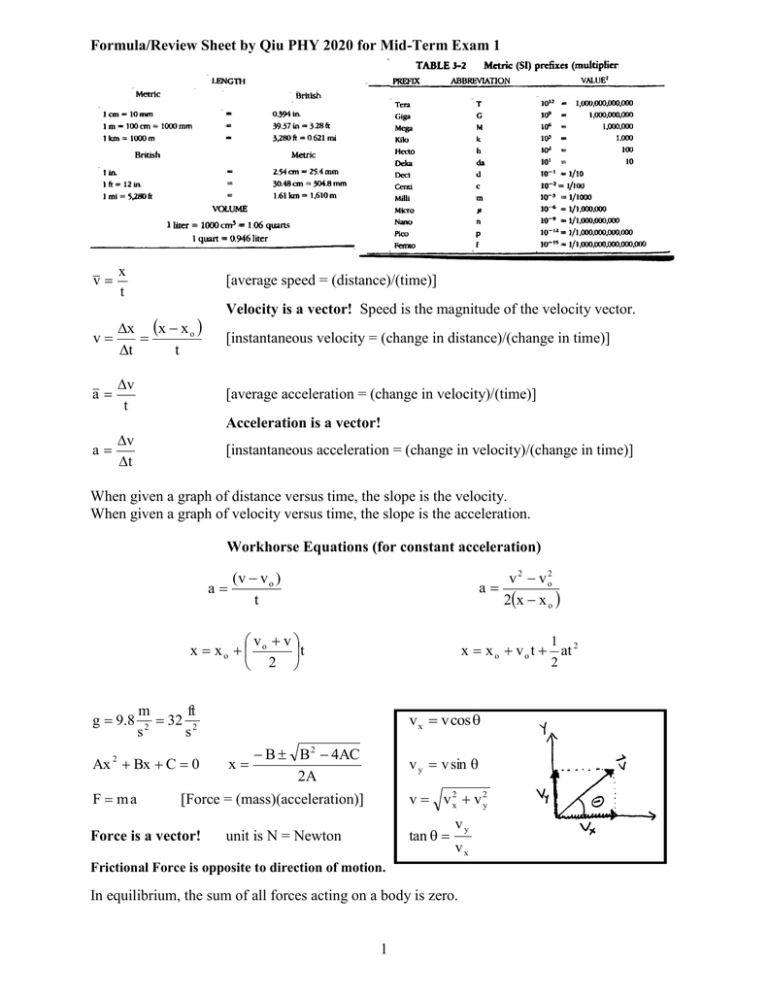
Formula/Review Sheet by Qiu PHY 2020 for Mid-Term Exam 1 v x t [average speed = (distance)/(time)] v x x x o t t a v t Velocity is a vector! Speed is the magnitude of the velocity vector. [instantaneous velocity = (change in distance)/(change in time)] [average acceleration = (change in velocity)/(time)] Acceleration is a vector! v a t [instantaneous acceleration = (change in velocity)/(change in time)] When given a graph of distance versus time, the slope is the velocity. When given a graph of velocity versus time, the slope is the acceleration. Workhorse Equations (for constant acceleration) g 9.8 (v v o ) a t v 2 v o2 a 2x x o v v x xo o t 2 x x o v o t at 2 2 m ft 32 2 2 s s Ax 2 Bx C 0 F ma 1 v x v cos x B B 2 4AC 2A v y v sin v v 2x v 2y [Force = (mass)(acceleration)] Force is a vector! tan unit is N = Newton vy vx Frictional Force is opposite to direction of motion. In equilibrium, the sum of all forces acting on a body is zero. 1 Formula/Review Sheet by Qiu PHY 2020 for Mid-Term Exam 1 Projectile Motion x-direction y-direction ax 0 a y g v xo v o cos o v yo v o sin o v x v xo (constant!) v y v o sin o gt x x o ( v o cos o ) t y y o ( v o sin o ) t gt 2 1 2 Trajectory: g y (tan o ) x 2 x2 2 v o cos 2 o Max. Height: h Range: v o2 sin 2 o R g Eo Ef v o2 sin 2 0 2g Conservation of Energy (PE) o (KE) o W (PE) f (KE) f W Fd [Work = (Force) (distance)] (unit is J, Joule) Force and distance are vectors and their dot product gives the scalar Work. So, use only the component of the Force that is in the direction of the movement. W (F cos ) d KE(linear) = P W t 1 m v2 2 W KE (KE) f (KE) o [Power = (work)/(time)] Spring (with spring constant k): (unit is W, Watt) PE F kx PE or U (Potential Energy) of gravity: U mgh 2 1 k x2 2 P F v (F cos ) v
